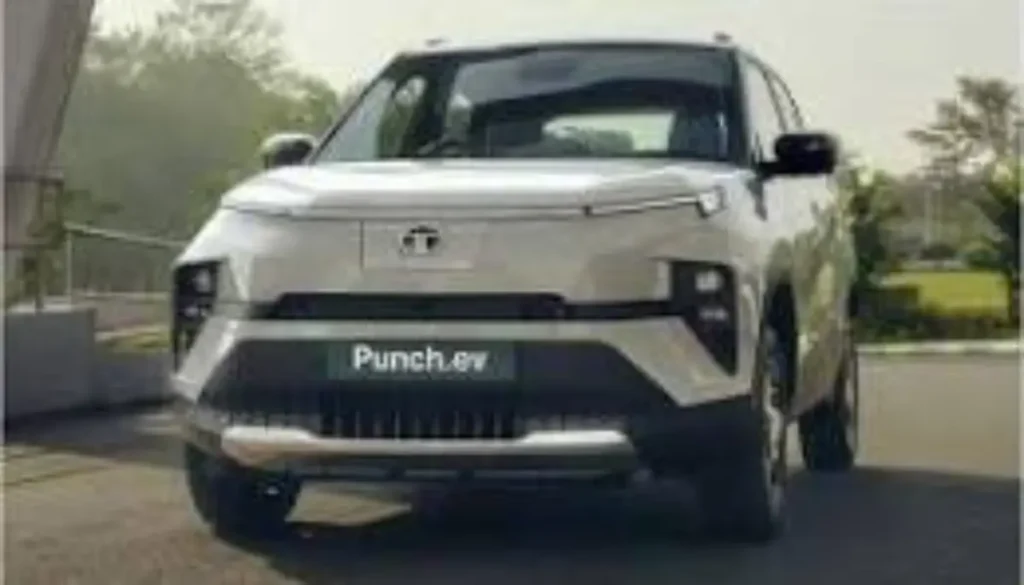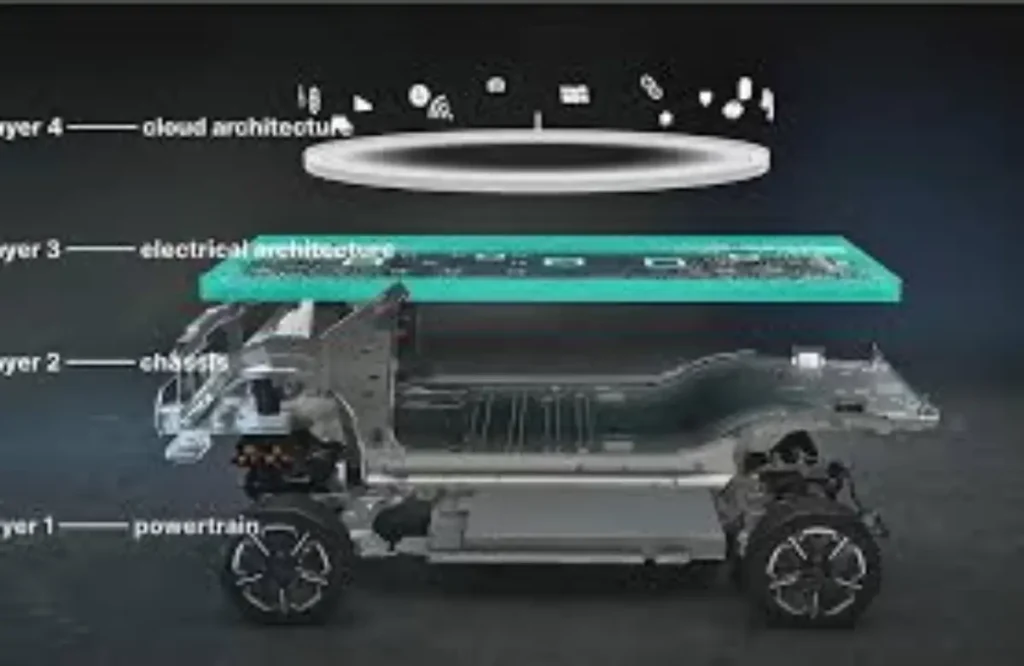Tata Punch EV: With the launch of the brand-new Tata Punch EV, which comfortably fits in between the entry-level Tiago EV and the top-of-the-line Nexon EV, Tata Punch Motors is poised to further establish its dominance in the Indian passenger EV market. Importantly, the Punch EV has the potential to become India’s best-selling electric vehicle (EV) despite being Tata’s fourth electric model. How come? It is, first and foremost, an SUV—the beloved body style—based on the wildly popular Punch petrol engine, exquisitely equipped, and aggressively priced (between Rs. 10.99 lakh and Rs. 15.49 lakh), and without a direct competitor. Although the Punch EV looks like a clear winner on paper, is it really that good on the road?
Tata Punch EV Platform
With the Tata PunchEV, Tata Motors has used the same Nexon electrification formula, which involves taking the ICE model, giving it a new, distinctly EV face, and adding more features and technology. One significant distinction exists, though: the Tata Punch EV is the first Tata vehicle to be constructed using the Acti.ev architecture, which is a thorough re-engineering of the original ICE platform for use exclusively in electric vehicles. The Tata Punch EV receives a far more thorough makeover than the Nexon EV, whose ICE platform saw less changes in an effort to get to market sooner. In order to make room for the centrally mounted battery pack, Tata Motors redesigned the floor to be flat and wider.

The battery pack itself functions as a stressed member and adds to the torsional stiffness of the chassis, which is 30% higher in the Tata Punch EV’s case than the ICE model. This is just one of the many benefits of the new Acti.ev architecture. It is always preferable to have a stiff and rigid chassis because it increases crashworthiness and permits the use of softer damper settings for a more comfortable ride without sacrificing body control.
While You Care for Your Car, Care for Your Child’s Future Too 💖
A fun and educational book every parent should gift their kid.
 Get Kiddy Store Fortune Now
Get Kiddy Store Fortune Now
In order to make up for the increased weight—320 kg in the case of the long-range version with a kerb weight of 1,340 kg—the spring rates are slightly stiffer than those of the ICE Punch. Around 100 kg less weight is carried by the standard model, which has a smaller and lighter battery pack. With stronger callipers and discs at the back (versus drums on the 82 horsepower version), the brakes have also been slightly improved. However, as with all EVs, the regeneration modes significantly improve the overall braking performance.
Tata Punch EV Range, Battery, Charging

The Tata Punch EV is available in two different battery capacities: the long-range model has a 35kWh pack, and the standard variant has a 25kWh pack. For the standard and long-range models, Tata Motors claims a range of 315 km and 421 km, respectively. You would have expected a larger battery pack given Tata Punch EV’s Acti.ev architecture, which is optimised for efficient packaging. However, the ICE version’s short 2,445mm wheelbase, which directly affects battery size, is the limitation in this case. The Punch EV’s battery pack, which is by far the most expensive part of an EV, is also reasonably priced because it uses the same cylindrical LFP cells as the Nexon EV. These cells aren’t particularly space-efficient, but they are a tried-and-true form and chemistry, and they are also locally sourced.
The industry standard CCS2 charging port is included with the Punch. The battery can be charged at a maximum speed of 25kW on a DC fast charger, according to the company, and it will go from 10% to 80% in 56 minutes. This is not particularly fast by today’s EV standards. Additionally, you get a 7.2kW AC fast charger that can be installed in your home or anywhere else you choose, as well as a 3.3kW portable charger that can be used to charge devices anywhere you find a 15A plug.
Tata Punch EV Design

The Punch EV has an even more attractive appearance than the standard gasoline-powered Punch. The nose is the only part of the design that has changed, with the charging port flap located right in the middle and the grille blanked out. It is less practical to have the charging port on the key fob in addition to the centre console, where it can only be accessed by pressing the release button. The headlamp cluster housings that protrude from the lower sides of the front bumper and the LED light strip that runs across the bonnet are the new signature features for all Tata EVs. This very prominent face is finished off with a scuff plate and an air intake located in the deep chin.
Tata Punch EV Interior Space, Comfort
The Punch is a compact compact SUV in the sense that it sits in a segment below the Nexon. Just 3,857mm long and 1,742mm wide, the cabin is expectedly snug but Tata Motors has done an outstanding job of making the seats very comfortable. The front buckets are generous even for 6-footers and the rear seat too is particularly well-shaped with terrific under-thigh support thanks to a generous squab and a high-seating position, which compensates for the raised floor. As a result, you don’t sit in that typical ‘knees-up’ position you experience in most EVs. The trade-off is reduced headroom due to the increased seat height, and this issue is exacerbated in the sunroof-equipped cars, which have lower roof liners. Legroom, too, is in short supply and, as a result, the rear seat is best only for short people.

The 366-liter boot is roomy and deep enough to fit two large bags inside, but it lacks a spare tyre and the tools, puncture repair kit and charging cable take up what little storage space underneath the boot floor. Additionally, there is a small frunk that you can use to store some additional small items, but it should ideally house the charging cable.
Tata Punch EV Performance, Ride and Handling
Tata Motors’ spectacular ascent in the Indian EV market has largely concealed its one major flaw: internal combustion engines. Although the Punch defies this assumption with its monthly sales of about 14,000 units, the very ordinary and underpowered 1.2 three-cylinder naturally aspirated petrol engine remains the weakest link in the package. The Punch EV, on the other hand, not only eliminates that shortcoming quickly but also adds 122 horsepower of powerful, smooth, silent, and seamless electric power—which has proven to be this tiny SUV’s greatest asset. The standard variant with the 25kWh battery gets a less potent 82hp motor, whereas the motor in the Nexon EVs is the same.

The Punch EV exhibits the effortlessness and ease of use that characterises the electric breed from the start. It picks up speed quickly and gradually, and you’re never left wanting more strength. Three driving modes are available: Sport, City, and Eco. Each is mapped and adjusted to accommodate various driving needs and styles. Of course, the most exciting mode is sport mode, which propels the Punch EV from 0 to 100 kph in an estimated 9.5 seconds. This is the mode to use when you want to have some fun. In typical EV fashion, the Punch EV whisks you to some serious speeds without causing any sweat or noise.
The neck-flexing thrust you get off the line every time you floor your right foot is what makes driving an electric vehicle (EV) addictive, but sadly, that instant response of maximum torque being unleashed from a standstill has been toned down.
Tata Punch EV Price and Verdict
The Tata Punch EV is a competitive urban runabout that performs exceptionally well when switching to electric power. It has all the necessary components—a powerful engine for cutting through traffic, excellent ground clearance, and a clever suspension system—to turn even the worst city roads into something spectacular. Because of its small size and elevated driving position, this small SUV is very easy to manoeuvre through traffic. What’s not to enjoy? The lack of room in the rear seat is the biggest flaw, though the cabin and some of the controls are a little clumsy. For a family vehicle that can seat four or five adults, you might want to consider the larger Nexon EV.
Tata Punch EV Review on You-Tube
Also Read: KTM 390 Duke: The Undisputed Champion of Indian Motorcycles

